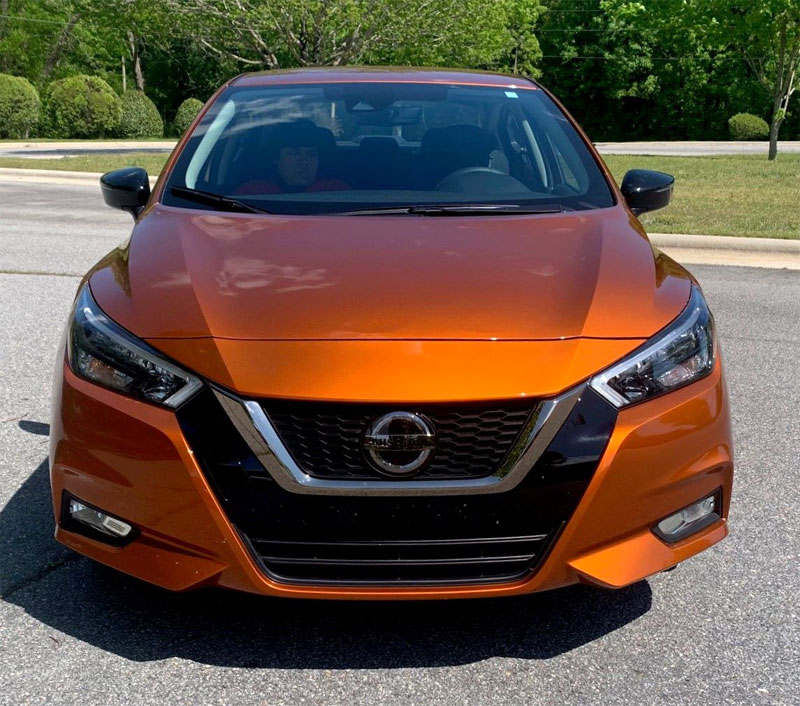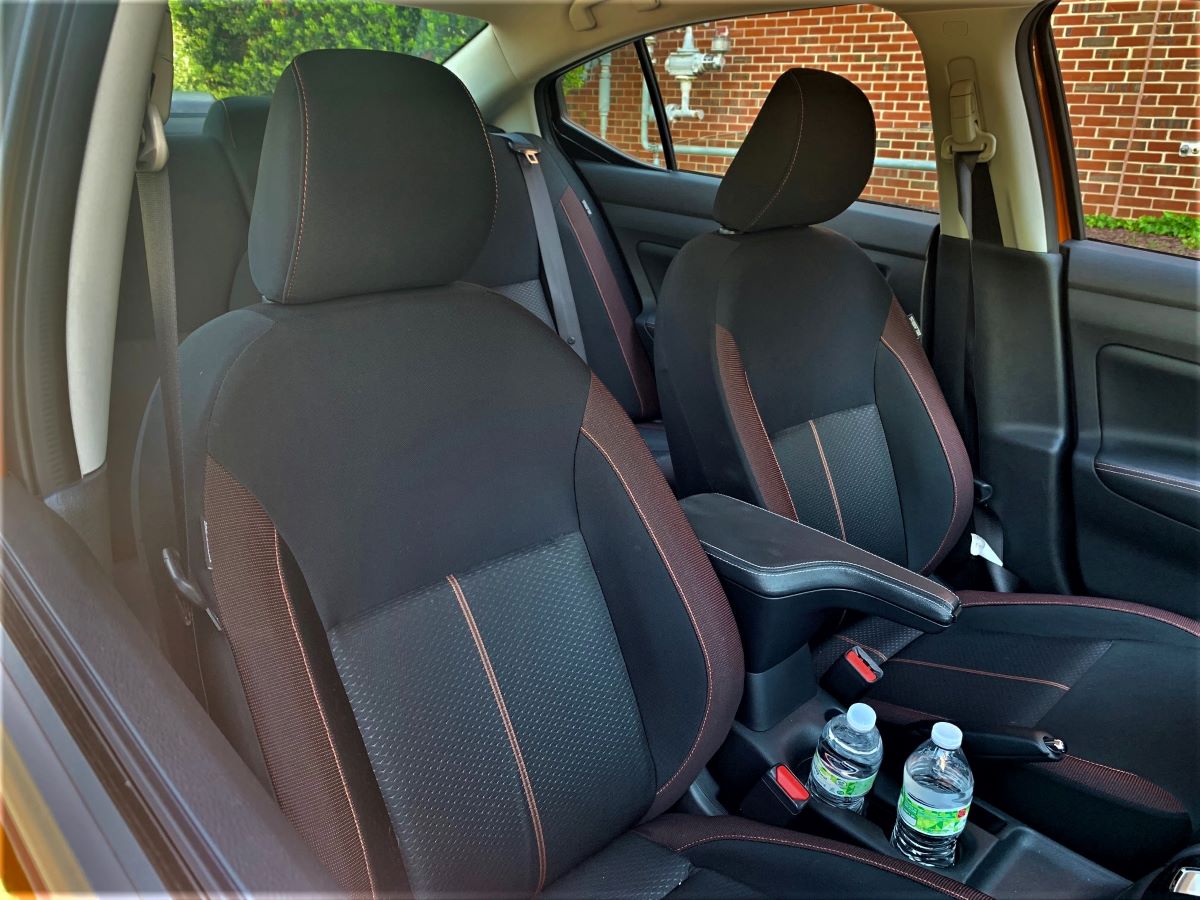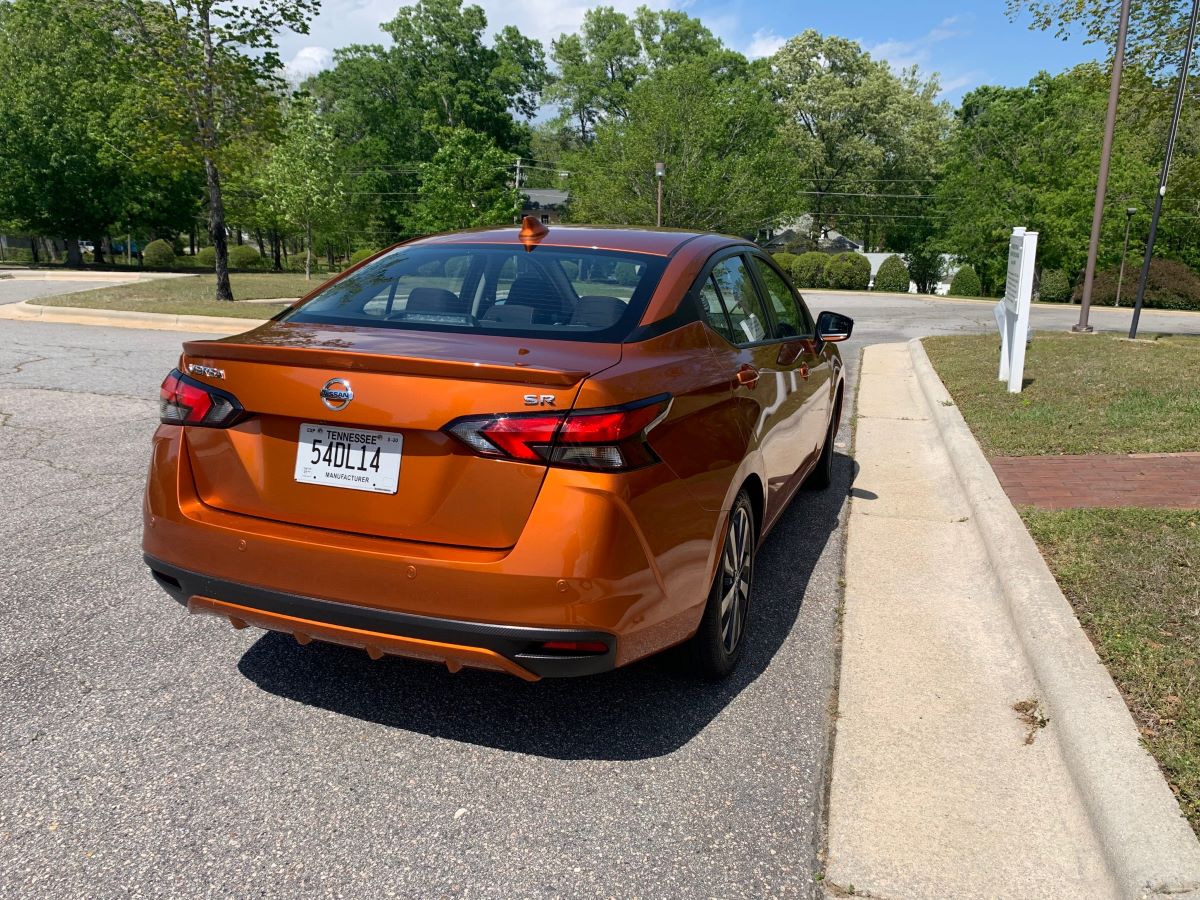The all-new Versa offers its own take on the brand’s “V Motion” grille.
With three new Nissan car models in just over a year, you might think the segment is poised to rebound. It likely isn’t, especially as sales of crossovers and trucks remain strong. Of course, we’re imagining what the market will look like once the present COVID-19 crisis is behind us.
Apparently, Nissan is taking a wider approach to the market, by doubling down on cars while updating its other models. The car pie may be shrinking, but for the remaining players there are enough sedan shoppers around to keep the market viable.
After rolling out an all-new midsize Altima sedan in 2019, Nissan has done likewise with the subcompact Versa and the compact Sentra, the latter reviewed here. It’s a clean-sheet overhaul for the Versa, which is now a sedan-only model.
Gone is the previous Versa Note hatchback. If you’re looking for utility, the small Nissan Kicks and Rogue Sport crossovers fill the void.
2020 Nissan Versa Review
Nissan offers the 2020 Versa in three trims: S ($16,400), SV ($17,640), and SR ($18,240). There is also a basic S version with a manual transmission retailing for $14,730. Add $925 to all trims for the destination and handling charge.
Certain color choices cost $395 more, including the monarch orange metallic of our test model. The available package is reserved for the top-trim SR model. There are also various accessory packages available, including lighting, electronics, floor maps, and trunk carpeting, which are installed at the dealership.
Exterior
Nissan’s design language continues to evolve, as expected. What’s noticeable about the new Versa is that it takes elements from the brand’s largest sedans – Altima and Maxima – and includes them. One noticeable feature is this model’s grille design, what Nissan calls “V Motion” to underscore its shape.
In the Versa it isn’t as strongly apparent as it is in the Sentra, but it’s still evident.
Owing to its smaller footprint, the Versa has a stubby hood and rear deck. Between the wheels you’ll find a strong door-handle-level character line, a rising beltline, and in the top trim a floating roof. Details such as the shark-fin antenna, LED lighting, and fashionable wheels suggest a more expensive model.
The standard equipment includes a chrome grille, halogen headlights, automatic lights, 15-inch steel wheels, and dual power outside mirrors. Upgrading brings in the LED lights, fog lights, aluminum alloy wheels, heated side mirrors, and a rear spoiler.
Interior
We won’t say the Versa seats five even with seatbelt placements for that many occupants. Ideally, it is a four-seater with ample room up front and tight quarters in the rear. If you’re tall and consigned to the rear seat, you better hope the front passengers do not have their seats pushed back.
Nissan employs soft-touch materials and plastics throughout the cabin. The dashboard is sculpted and layered, making for a pleasing design. Nissan places the display panel in the lower dashboard just above the center console. We liked the large open storage compartment at the base of the console and that’s where your cell phone sits.
Our test model featured a leather-wrapped steering wheel, piano black trim, and sport cloth seats with orange stitching. The front seats are adequately padded and offer fair support for long trips.
The covered storage compartment between the front seats doubles as an armrest. It is small, deep, and features a USB port. We like that the front doors have wide pockets, suitable for holding drink bottles.
The rear 60/40 split fold-down bench seat doesn’t offer a center fold-down armrest. It isn’t as thickly padded as we would prefer, but it does offer ample room for two. What’s especially welcome is the near 15 cubic feet of trunk storage space – that’s larger than most cars in the segment and matches what some midsize models offer.
Among the standard features for the 2020 Versa are full power accessories, a tilt-and-telescopic steering column, air conditioning, and cloth seats. The list of upgrades includes heated front seats, upgraded cloth options, and leather touchpoints.
Technology
On the tech front, Nissan supplies the Versa with a 7-inch touch-screen display, three USB ports, Bluetooth, Siri Eyes Free, Apple CarPlay and Android Auto smartphone compatibility, and four speakers.
Some models come with a six-speaker audio system with satellite radio and include Nissan Connect apps. This represents a basic offering but it is far better than what we saw a decade ago.
Safety
Nissan supplies every Versa model with several driver-assist technologies, including high-beam assist, lane-departure warning, automatic emergency braking with pedestrian detection, and rear automatic braking. We’ve seen the latter feature offered as an extra-cost option in far pricier models.
But Nissan doesn’t stop there. Beginning with the SV trim, Nissan adds blind-spot warning with rear cross-traffic alert. Thus, Nissan offers many of the advanced features we like with adaptive cruise control the sole major exception.
Performance
Every 2020 Versa is governed by a 1.6-liter four-cylinder engine. This one makes 122 horsepower and 114 pound-feet of torque. Nissan pairs this engine with a 5-speed manual gearbox in base models.
Few customers, however, will likely choose the manual transmission, chiefly because not a lot of drivers know how to use one or prefer not to have one. What’s especially interesting about today’s vehicles equipped with manual transmissions is that they’re not as fuel efficient as automatic transmissions.
In the Versa’s case, we have a continuously variable transmission sending power to the front wheels in most models.
Here, the mpg difference is profound: 32 mpg in the city and 40 mpg on the highway for a combined 35 mpg. This compares to 27/35/30 mpg city/highway/combined in the base model. Even though fuel prices are low as of this writing, we think springing for the CVT makes sense.
Performance is not the Versa’s forte. But it isn’t a sluggard. This small sedan offers adequate off-the-mark acceleration and decent passing power. Under full throttle – such as when traveling down a highway entrance or when passing, the Versa does what is must do.
The engine does whine when tapped to perform, but the CVT eases as various “steps” within the band curve. That a CVT is present won’t be noticed by the average driver, but it will be quickly detected by everyone else.
Electronic steering, front and rear stabilizer bars, and decent handling combine to give the Versa an improved driving feel over earlier models.
Competitive Set
We mentioned that the Versa’s competition is shrinking. That’s true with models such as the Ford Fiesta on the way out and likely the Chevrolet Sonic following. Fiat Chrysler doesn’t have a true subcompact offering, but it still offers the mini Fiat 500. The Mazda2 is gone in name only as it is rebadged as a Toyota.
The remaining players include the Honda Fit, Toyota Yaris, Volkswagen Golf, Hyundai Accent, and the Kia Rio. Mitsubishi and Subaru are two other manufacturers that are absent from the segment.
Our Recommendation
Rarely do we recommend a base model and that holds true for the Versa. Yes, it is the only trim with a manual, but if you’re an enthusiast, this isn’t the model to consider.
We think either the SV or SR model are good choices, but we’d pay the extra $600 for the latter, gaining such features as LED headlights with LED accent lights, 17-inch split 5-spoke aluminum-alloy wheels, a body-color rear spoiler, keyless entry with push-button start, and sport cloth seat trim.
A $300 Convenience Package adds heated front seats and intelligent (adaptive) cruise control.
2020 Nissan Versa Specifications
| Nissan | 2020 Versa | |
|---|---|---|
| Segment | Subcompact Car | |
| Price Range | $14,730 to $18,240 | |
| Destination Charge | $925 | |
| Standard Engine | 1.6-liter, I4 | |
| Horsepower | 122 @ 6,300 RPM | |
| Torque (lb.-ft.) | 114 @ 4,000 RPM | |
| Transmission | 5-speed manual or CVT | |
| Seating | 5 | |
| Curb Weight (pounds) | 2,599 to 2,729 | |
| Wheelbase (inches) | 103.1 | |
| Length (inches) | 177.0 | |
| Width (inches) | 68.5 | |
| Height (inches) | 57.3 to 57.7 | |
| Head room (f,r…inches) | 39.5; 36.3 | |
| Leg room (f,r…inches) | 44.5; 31.0 | |
| Shoulder room (f,r…inches) | 53.1; 53.6 | |
| Hip room (f,r…inches) | 50.9; 50.1 | |
| Storage (cubic feet) | 14.7 to 15.0 | |
| Gross vehicle weight (pounds) | 3,461 to 3,605 | |
| Towing (pounds) | NR | |
| Payload (pounds) | NR | |
| Fuel | Regular unleaded | |
| Fuel Tank (gallons) | 10.8 | |
| EPA Fuel MPG (city/highway/combined) | 27/35/30(5MT); 32/40/35 (CRT) | |
| Manufacturing Plant | Aguascalientes, Mexico |
Data compiled by Tom Keegan. Specifications supplied by the manufacturer.
See Also – The Nissan Kicks Gets a Big “V” for Value
Photos copyright Auto Trends Magazine. All rights reserved.
- 2024 Mazda CX-50: A Compact SUV with Premium Aspirations - Apr 15, 2024
- 2024 Ford Mustang (Iconic Pony Car Evolves) - Apr 4, 2024
- 2024 Ford Maverick (Looks Like a Truck, Drives Like a Car) - Mar 28, 2024






